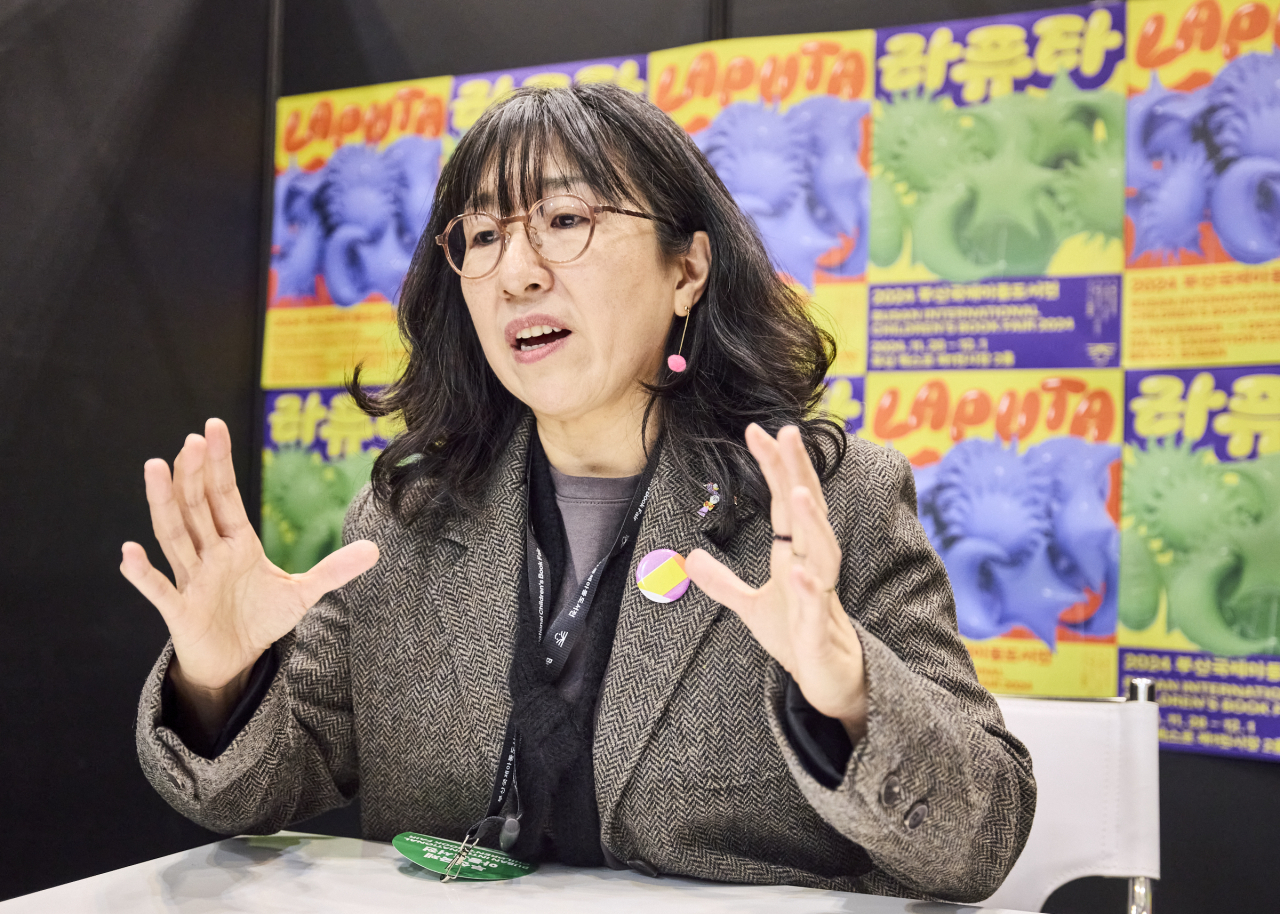Embracing the Void: The Transformative Power of Minimalism in Lee Suzy’s Art
In the world of visual storytelling, few artists manage to captivate their audience with the sheer power of simplicity quite like Lee Suzy. Known for her minimalist approach to picture books, Suzy’s work invites readers into a world where less is more, and where the absence of text becomes an invitation for creative engagement. In an exclusive interview, Lee Suzy discusses how her distinctive style encourages a personal journey for each reader, offering a fresh perspective on the art of visual narration.
The Art of Minimalism: A Path to Imagination
Minimalism, in art, is often associated with clean lines, sparse designs, and the deliberate removal of extraneous elements. This art form challenges traditional narrative structures, favoring a more intuitive and open-ended approach. Lee Suzy’s picture books exemplify this philosophy, using minimalist illustrations and sparse or non-existent text to create stories that unfold in the minds of her readers. This technique is particularly powerful in children’s literature, where the blank spaces between the images become fertile ground for imagination.
Suzy’s work, such as her acclaimed picture book The Sound of Silence, demonstrates her unique ability to convey complex emotions and stories through simplicity. In this book, Suzy relies on subtle imagery, light, and space to evoke a meditative atmosphere. The absence of words forces readers, particularly young ones, to interpret the visuals on their own, fostering a deeper connection with the narrative. Instead of reading a story as it is explicitly told, the reader is encouraged to explore the imagery and create their own interpretations.
The Psychological Impact of Minimalism
The power of minimalist design lies in its ability to prompt reflection and introspection. When a picture book has fewer words or visual clutter, it invites the reader to pause and engage with the content more thoughtfully. According to psychologist Dr. Joshua Hook, minimalism in art can reduce cognitive overload, allowing the viewer to focus more on individual details and derive their own meanings. This kind of engagement is not just a passive experience; it requires active participation from the viewer, resulting in a personalized connection to the material.
In Suzy’s work, this effect is even more pronounced. By offering wide expanses of empty space around the illustrations, she invites the reader to project their thoughts and emotions onto the page. For example, in one of her more recent works, a simple illustration of a lone figure standing under a vast, empty sky invites a multitude of interpretations. Some readers may see loneliness, others may feel a sense of freedom or possibility. These interpretations are not dictated but rather discovered through the reader’s own experiences and imagination.
Transforming the Reading Experience into a Personal Journey
The key to Lee Suzy’s minimalist approach is the belief that storytelling is not a one-way communication. Traditional picture books often follow a clear narrative path, with both text and images guiding the reader toward a particular interpretation. Suzy, however, turns this idea on its head. In her books, the absence of explicit direction forces the reader to take ownership of the story. Each reading experience becomes a personal journey, where the reader’s own feelings, memories, and thoughts shape the way they understand the narrative.
This is particularly important in a world where children’s books are often didactic, imparting moral lessons or guiding young minds toward specific conclusions. Suzy’s minimalist approach, in contrast, allows for a more organic form of learning, one that taps into a child’s creativity and sense of self-discovery. It encourages young readers to think critically, make their own connections, and even embrace uncertainty—skills that are essential in today’s rapidly changing world.
The Role of Empty Space in Storytelling
Empty space is a key element in Lee Suzy’s books. Far from being a void, it becomes an integral part of the narrative, enhancing the emotional and conceptual depth of the illustrations. The use of negative space invites readers to engage more deeply with the story, filling in the blanks with their own thoughts, emotions, and memories. This technique not only encourages a more active engagement with the material, but it also invites a sense of wonder and discovery, as readers are often left to fill in the gaps of the narrative themselves.
In an interview with The Paris Review, artist and designer Hilda Whyte noted, “The empty space on a page serves as a kind of pause, a breath between the images. It is not an absence but a presence, one that invites the viewer to reflect and interpret.” This notion is echoed in Suzy’s work, where each image and its surrounding emptiness work in harmony to create an experience that is both meditative and expansive.
Beyond the Page: The Broader Implications of Minimalist Art in Modern Storytelling
While Lee Suzy’s minimalist design has found a dedicated audience in the world of picture books, its influence extends far beyond that genre. Minimalism in visual storytelling is increasingly being adopted across various media, including graphic design, animation, and even film. The success of Suzy’s work points to a growing appreciation for simplicity and its potential to evoke deep emotional responses. In a time when the world is bombarded with information, visual clutter, and constant stimulation, there is a noticeable shift toward simplicity as a form of both aesthetic and emotional clarity.
This trend is reflected in the wider culture, from the popularity of minimalist interior design to the rise of “clean” branding strategies. In the world of visual media, less is often more. By stripping away unnecessary elements, creators can focus on the core emotional or thematic message they wish to convey. Suzy’s books, which invite readers to slow down and engage with the material in a thoughtful way, align perfectly with this cultural moment, offering a counterbalance to the overstimulation of modern life.
Minimalism in Digital Storytelling
The minimalist storytelling approach is also gaining traction in the digital world. From web design to digital art and interactive media, there is a growing emphasis on creating experiences that allow users to engage in a more reflective and mindful way. For example, many modern video games utilize minimalist art styles to immerse players in a world where the focus is on exploration and personal discovery rather than complex narratives or flashy graphics.
Similarly, apps that focus on mindfulness or journaling often employ simple, clean designs that encourage users to focus on their thoughts rather than being distracted by excessive content. This trend toward simplicity is indicative of a broader cultural shift that values presence over noise and reflection over consumption.
Conclusion: Reimagining the Art of Storytelling
Through her minimalist approach, Lee Suzy has not only transformed the way we think about picture books but also redefined the very nature of storytelling. By removing traditional narrative structures and text-heavy exposition, Suzy allows her readers to enter a world where their own imaginations can take center stage. In doing so, she has shown us the power of absence—how the space left behind can be just as meaningful as what is placed on the page.
In a world that often values speed and information overload, Suzy’s work reminds us of the beauty in simplicity and the importance of creating space for reflection and personal interpretation. As we move further into the 21st century, her work stands as a poignant reminder that sometimes, the most profound stories are the ones that leave room for us to write our own endings.
For those interested in learning more about Lee Suzy’s works and the power of minimalist art in storytelling, visit her official website.
See more TED Talks World



